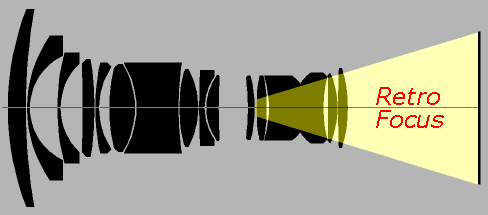
| home | analogue | pinhole | alt-photo | gallery | for sale | music | anything else | about me |
I don't have a proper gallery but here are some examples of my analogue work. Please take loot at alt-photo also. You can see some of my alt-photo prints here as well.
A portrait of our Devon & Cornwall sheep named Charley
(Canon T70, 50/1.8, Ilford FP4+ in homebrew Caffenol-C-M, straigt scan from negative)
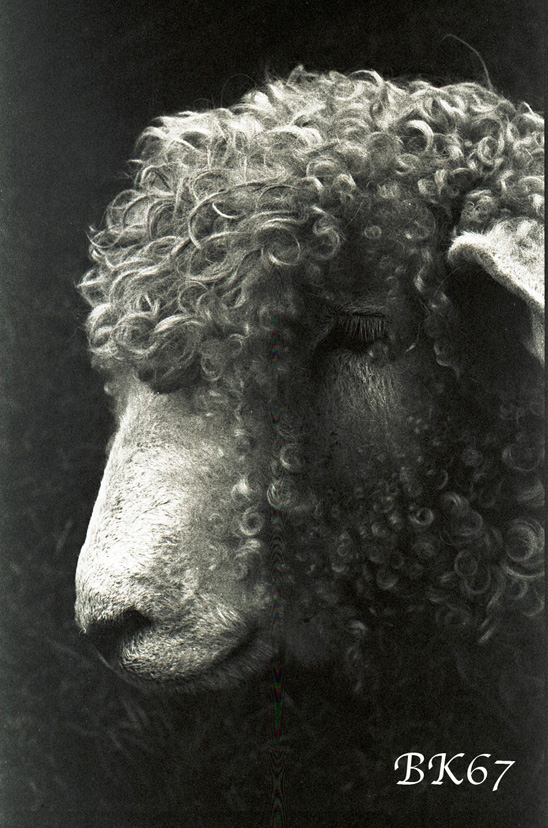
The great, old church in Naarden. The Netherlands, March 2017
(FKD 18x24 camera, B&W photographic paper as negative (ISO 3), exposed for 45 minutes in camera).
Experiment: making a paper negative (on b&w photographic paper) with my wooden LF camera (a Russian FKD 18x24 cm) using my hat as a shutter. I photographed the inside of an old church in Naarden, The Netherlands. This is a beautiful church with a wonderful wooden, painted ceiling and a beautiful organ. It's also the location for the annual Mattheus Passion performance.
I loaded a sheet of photographic paper in the wooden film tray and exposed it at ISO 3. Since it was indoors, I got an exposure time of 54 minutes. Since the lens has no shutter, I used the lens cap as a shutter. There were some visitors in the church, but they don't show in the negative. One person stopped for about 5 minutes to look at the organ and appears in the image as a ghost.
The Hedgehog stream through a pinhole
(Natasha 6x19 cm wooden pinhole camera, expired Fuji RVP (Velvia 50) 120 roll film, exposed 40 seconds)



I like to wander around with my panorama pinhole camera and take images along this small stream. I used a 6x19 cm wooden pinhole camera loaded with expired Fuli RVP 120 roll film (= Velvia 50 ASA slide film). These are straight scans without any Photoshop adjustments. These beautiful colours are the result of using old expired slide film in a pinhole camera (no lens so no filtering or coated glass).
I live outside a small town at "the Veluwe" in the middle of The Nertherlands. It's a very large area with fields, woods, heather and small streams. Close to my home there are stil some planes ruled by nature. There is a small stream called "Egelbeek" (= Hedgehog stream) that originates close by in the woods. It's Nature's natural transport system for water in this area!! The first and third photo are of the stream itself, the second photo is of the local sheeps grazing on the banks of this stream.
Following the truck for 280 meters in 10 seconds
(PinHolga 6x6, Fuji NPC160 roll film developed in C-41)
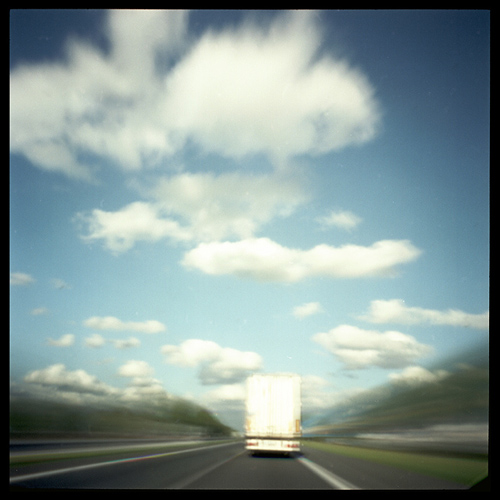
Somewhere between Amersfoort and Apeldoorn (A1 in Holland). I placed my pinhole camera on the dashboard of my car and followed this truck. The shutter was open for 10 seconds and 280 meters.
Dreamscape (WPPD 2017 admission)
A stream at The Veluwe in the province of Gelderland (NL). Equipment used: Ondu 6x6 wooden pinhole camera, Fuji NPC 160 rollfilm (expired 2005), 40 seconds handheld (no tripod), straight scan from negative.
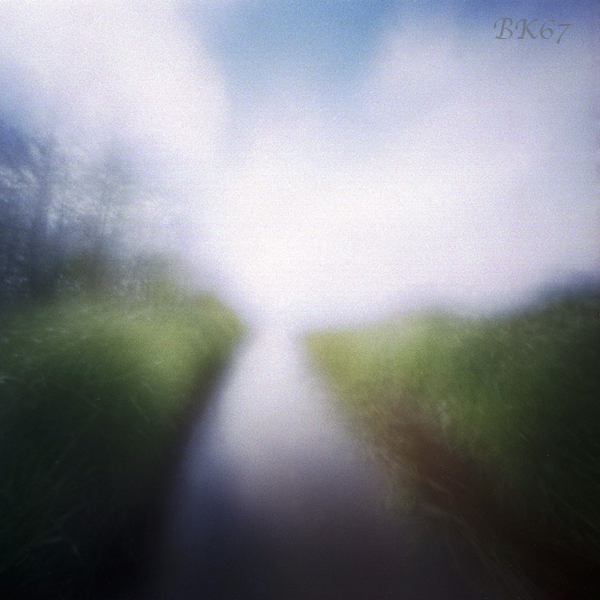
Some landscapes, shot with an old Gevabox I converted into a pinhole camera on Konica PRO400 (expired) in C-41:
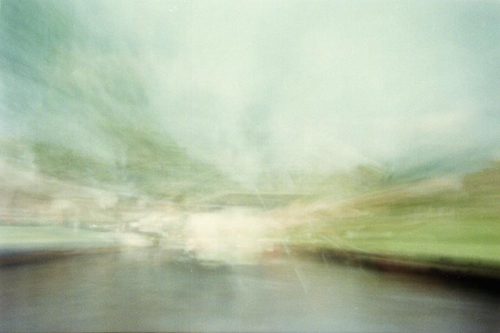
I shot this image with my pinhole camera from a boat on the water. It was cloudy and a little bit of wind rocked the boat softly. The exposure was 40 seconds so I wasn´t sure how it would turn out, but is has a nice hint of "Pictorialism". I was pleasantly surprised with the results.
* camera: old Gevabox converted into a pinhole camera (6x9 cm negative)
* film: Konica PRO 400 roll film (expired)
* exposure: 40 seconds
* developer: C-41 by a professional lab
* scanner: Epson 3200 PHOTO with Silverfast software (but no digital rework what so ever though)
This second shot was also made with the same camera from the shore later on the same day (exposure: 40 seconds).
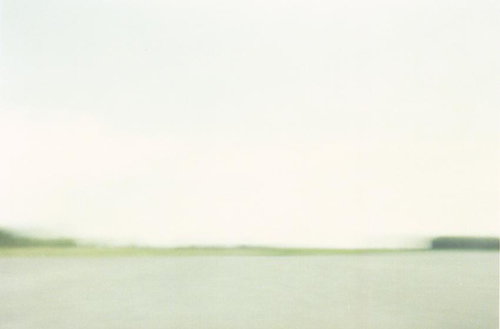
Pinhole trees and cathedrals
(Gevabox, converted into a pinhole camera, on expired Fuji Superia 120 rollfimm)
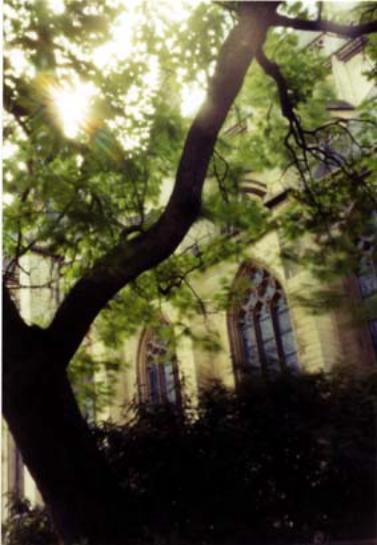
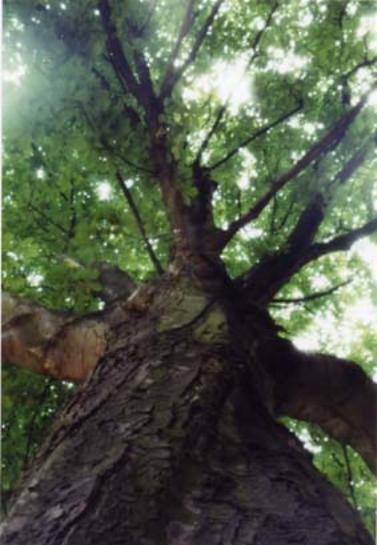
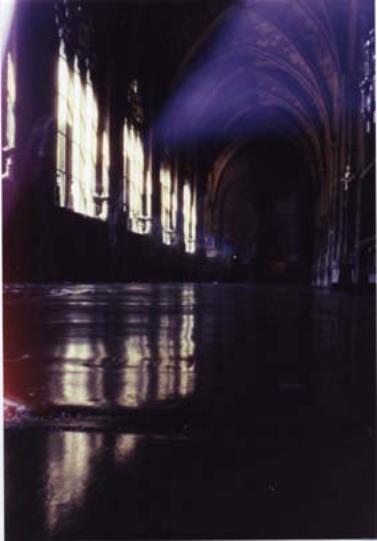
The purple streak in the last photo isn't flaring, but a beautiful ray of purple light through the glass stained window, caught by the pinhole camera. It's not lens flairing, for a pinhole camera doens't have a lens - just a pinhole acting as a diaphragm.
Two portraits on homemade dry-plate glass negatives
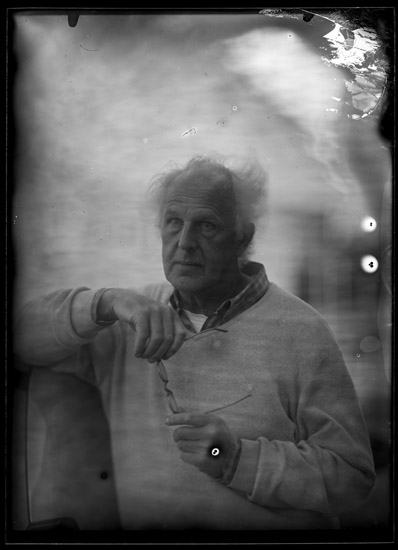
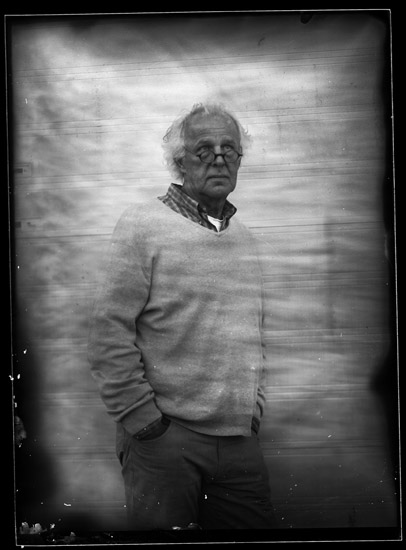
- Emulsion = Rollei Black Magic
- Iso = 1 (yes: only one!)
- Exposure time = 1 second
- Apperture = f /4.5
- location = outdoors in the shade.
I used an old Russian large format camera: FKD 13x18 (almost 5x7") with an Industar 215 mm lens and an Industar 300 mm lens.
Cow tasting salty
(homemade salt print on aquarel paper)
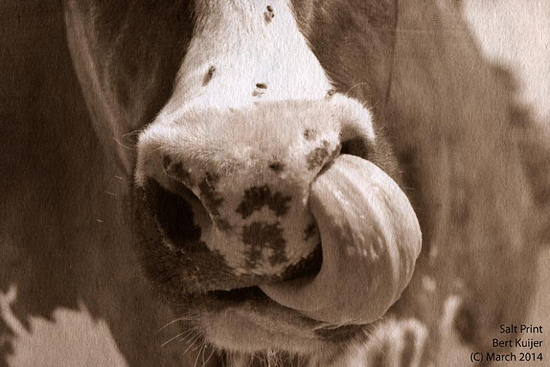
This print is made with the alt-photo process of "Salt Printing" on aquarel paper. I scanned my original photo and made a special digital inter-negative for this printing process. Salt printing is an old process technique from 1833, whereby paper is treated with a solution of salt and silver nitrate and then subjected to outdoor exposure (sunlight) or an indoor UV lamp. I used a lamp this time. I love this process for its simplicity and beauty of the prints.
# my Salt Printing Process in short #
I used 20 grams Ammoniumchloride [NH4Cl] on 1 liter water to salt the paper. I also added Sodiumcitrate [Na3C3H5O(COO)3] (20 grams on 1 liter water) to the salting mix to make it a little more light sensitive and to make the tone of the final print a tiny warmer. The paper itself wasn't previous seized with gelatine, albumen or arrowroot, but I added a little gelatine (8 grams on 1 liter water) to the salting mix itself. I submerged the paper in the solution to get it soaked. After drying the paper I made it light sensitive with silvernitrate (12 grams on 1 liter water), using a brush. Exposure was 9:30 minutes under lamps using a digital negative (black-green printed for more "density"). The print was first washed in clear water to get rid of the surplus of unexposed silver, then washed in salt water (= 5% NaCL), then washed in clear water again and finally fixed in Sodiumthiosulfate [Na2S2O3] (150 grams on 1 liter water) and Sodiumcarbonate [Na2CO3] (2.5 grams on 1 liter water). The final wash is in water with a little hypoclearing agent to remove all the fix.
High water at Deventer, The Netherlands
(homemade albumen print on aquarel paper)
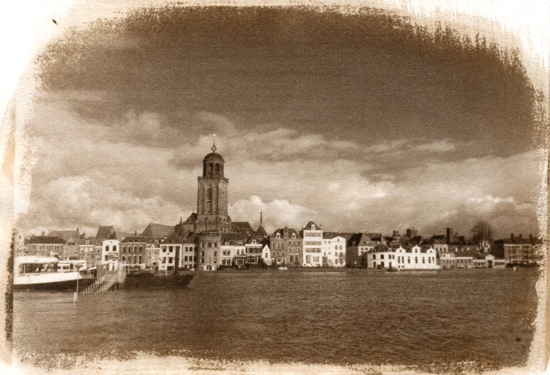
This is an Albumen print on aquarel paper, made from an anlogue negative shot with a Olympus Mju-II (never leave home without it). This is the town of Deventer at high water of the river IJssel. "Albumen" is made from fresh eggs and used instead of gelatine to seize the paper. It also gives a beautiful glow to the print (sorry, I can't show that online).
Traveling negative #1 of 3: Salt print (warm tone)
(homemade salt print on aquarel paper)
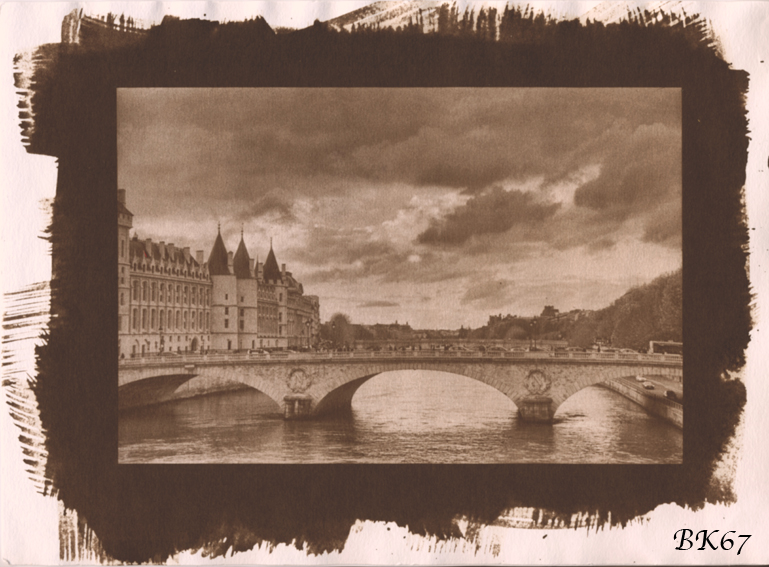
A homemade salt print on aquarel paper. This is the 1st of 3 prints I made with this negative. I made an internegative from an original traveling negative (made by darkosaric) from a bridge in Paris. This negative literly travelled around the world: 23 participants from the APUG forum made a print of it with their own interpretation. I made my version in 2017.
I used the original negative to make a larger digital inter negative to make three contact prints on different papers. This one is made on regular drawing paper (VanBeek, not seized) giving it a nice, warm brown tone. Exposure: 9:30 minutes under a UV lamp light.
Traveling negative #2 of 3: Salt print (regular tone)
(homemade salt print on aquarel paper)
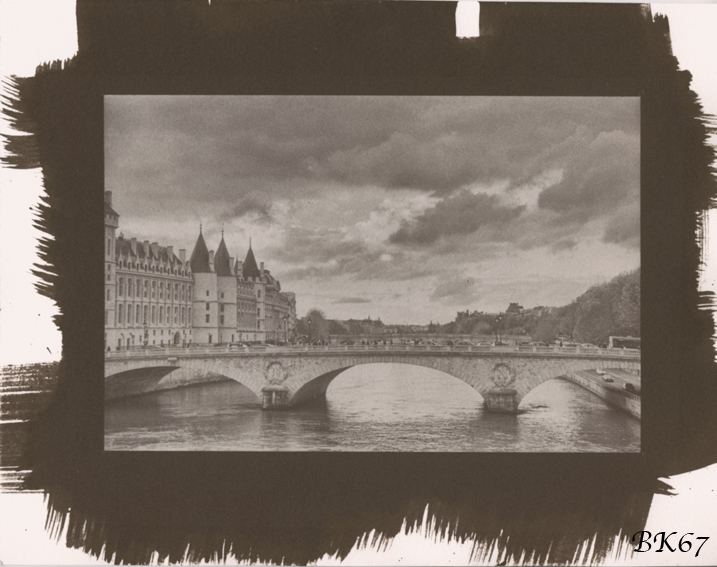
A homemade salt print on aquarel paper. This 2nd print is made on Hahnemühle Platinum Rag paper (not seized), giving it a bit more grey (more dull?) brown tone. Exposure: 9:30 minutes under a UV lamp light.
Both salt prints were made with the same negative, same process and chemicals. This shows how much the paper influences the colour of the final print. (I tried to match the scan on my screen as much to the original as possible). The Hahnemühle looks almost grey, indeed, while the prints on normal drawing paper and the Schut - Terschelling paper are much more brown-reddish.
Traveling negative #3 of 3: Albumen print
(homemade albumen print on aquarel paper)
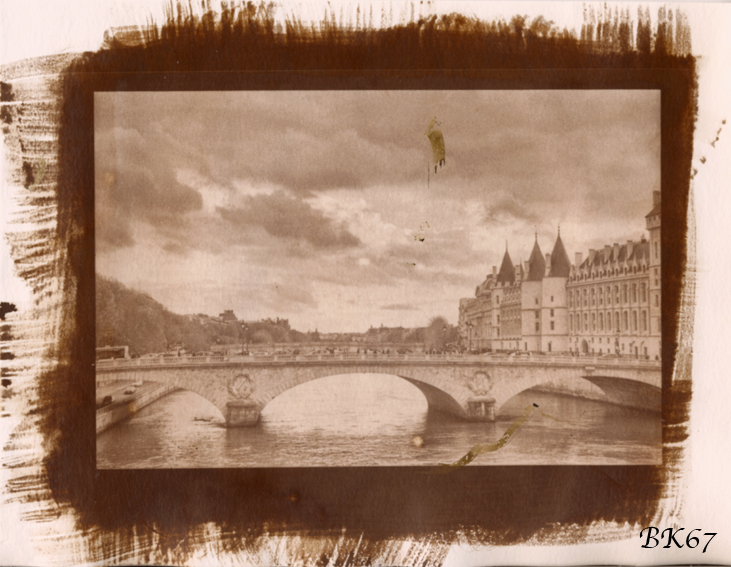
I also made an albumen print with this traveling negative, but somehow the paper got polluted during seizing with some silvernitrate. I immediately got some brown streaks - maybe from some residu of the fix on my gloves?? I still made the print to test this paper, that was new to me. It's a beautiful aquarel paper with a very nice structure - and very suitable for salt printing and albumen printing. It's made in the Netherlands and is called "Terschelling" and made by "Schut" from Heelsum, The Netherlands (Hot Pressed, Matt, Demi-Satine, 300 grams/m2). This albumen print (with the two smudges from the contamination and the (on purpose) reversed negative), is the most "brown-reddish" prints of all thee.
Albumen printing is a POP process (so no developer) very similar to the salt printing proces. But now the paper was seized with egg white before printing, giving it a beautiful glow (almost impossible to scan and show on screen). Exposure: outdoors 1.5 minutes in full sun light (@ 21 degrees Celsius) - but 2 minutes would have been better.
Old wooden church in Nevada, USA
(homemade albumen print on aquarel paper)
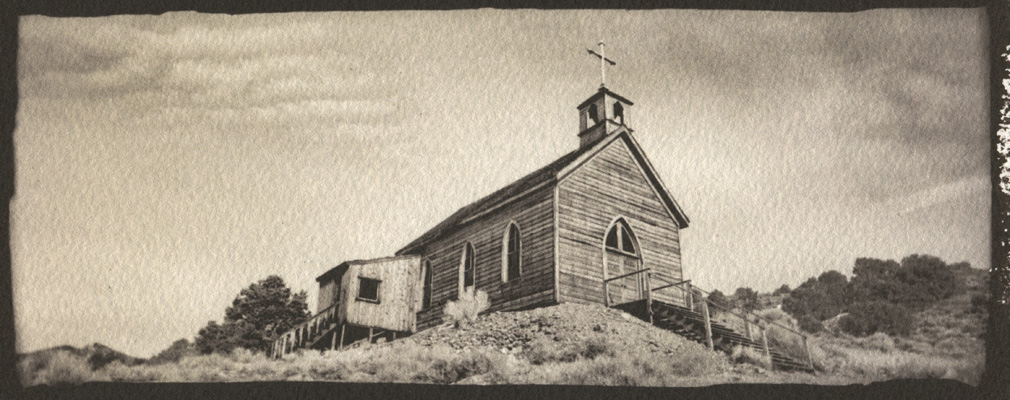
Albumen print on aquarel paper.
Tree struck by lightning in my back yard
(homemade albumen print on aquarel paper)
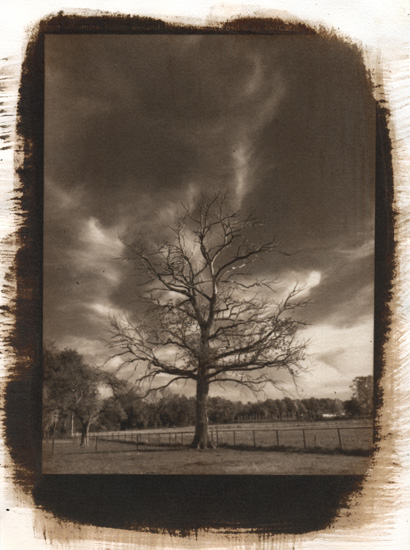
Albumen print on aquarel paper. This is an old Oak tree (over 130 years old), that died after it was struck by lightning.
First attempt with multiple exposures in camera
(Mamiya RB67 with 127 mm lens, 5 exposures @ f8 & 1/125 sec., Kodak Tri-X developed in Ilford Ilfotec DD-X, straight scan from negative)
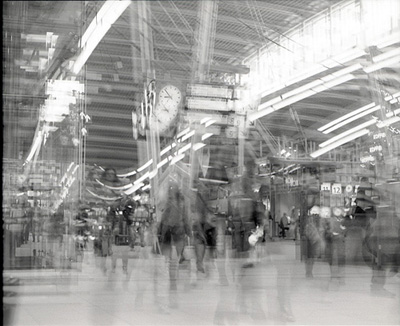
I sat on a bench at central station (Utrecht, The Netherlands) and tried a multiple exposure as an experiment, to see how this will work out. It was hard to keep the camera steady, transport film and cock shutter without using a tripod. I measured the available light, then divided the shutter speed by 5 and made 5 exposures on one negative.
A drive-by shooting ...
(Canon T70, 50 mm 1.8 FD, Audi A4 @ 80mph, Ilford FP4+ in homebrew Caffenol-C-M for 14 minutes @ 20 degrees Celsius)
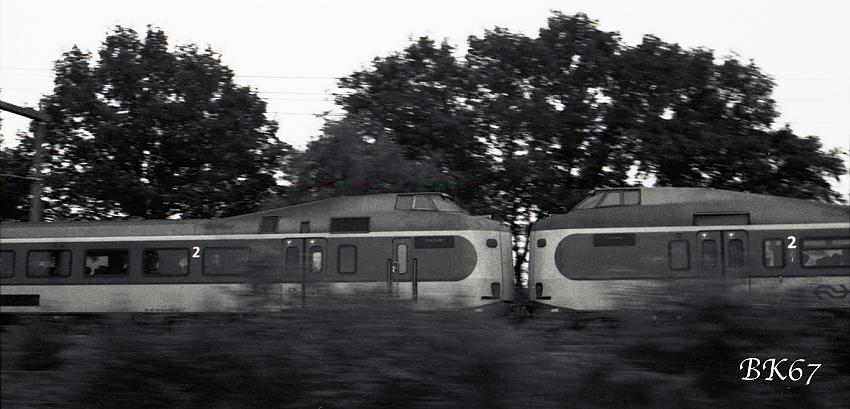
Two train wagons, each second class. We were both doing 120 kmh (about 80 mph), when I pulled up beside the train on the highway at the way home. I had the cameral laying on the passengers seat beside me, so I made the shot while holding the camera in front of the right side window. I simply lifted the camera and pulled the trigger, for I didn't have the time to focus properly (besides on the road). The funny part: often I take this train twice a week, looking at the cars on the highway. Quite a weird double perspective ;-)
Public Places (Woca #3) - entry MSA July-Aug 14
(Woca 120G, double exposure 2x 1/100 s, Ilford FP4+ in DDX, straight scan from negative)
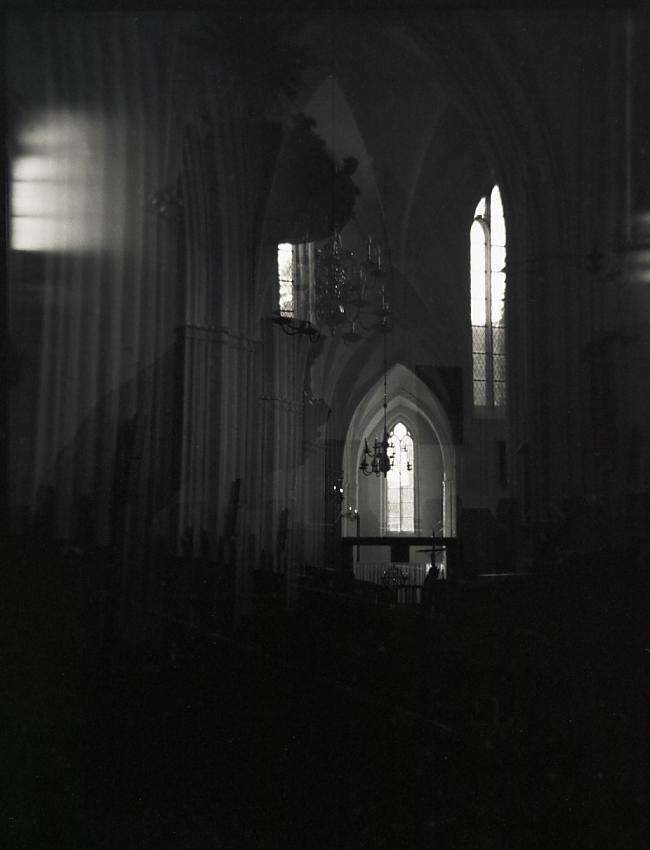
This photois a double exposure inside the Sct. Knud Kirke (St. Canute's Cathedral), the same beautiful 900 year old church in Odense, Denmark, of which I posted the image of its ceiling (see below). The Woca 120G camera is an old discontinued Russian plastic camera from before the Holga cameras got famous. It was a first model with a glass lens (sort of) and was produced prior to or at the same time as the first Holga with a plastic lens: the Holga 120S. It uses 120 roll film with negative size 6x4.5 cm. I like this camera and its very simple glass lens. It adds a nice sphere to the images, doesn't it? "The WOCA 120G is a discontinued glass lens Holga. It is similar to the Holga 120S in every way except that it has a very inexpensive glass lens. In theory the glass lens should make the images slightly sharper, at least in the middle. Like the original Holga 120S, the WOCA has only one shutter speed, (approximately 1/100th) and only one f/stop at roughly f/8."
Interior of a very old farm in Soest, The Netherlands
(Bronica SQ-B with 40 mm lens, Ilford FP4+ developed in homebrew Caffenol-C-M)
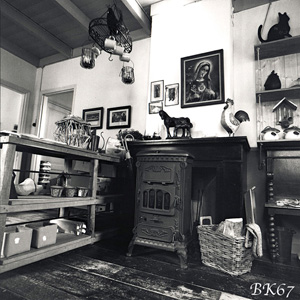
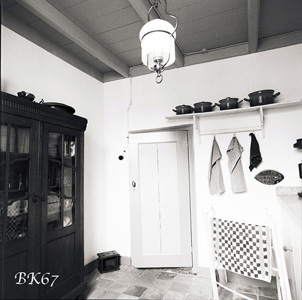
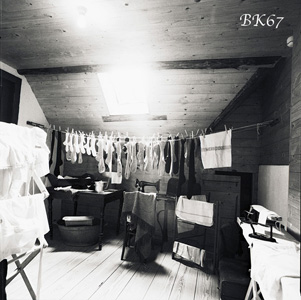
"Come over ... and buy, buy buy!"
(Bronica SQ-B with 80 mm lens, Kodak Tri-X in Ilfotec DD-X)
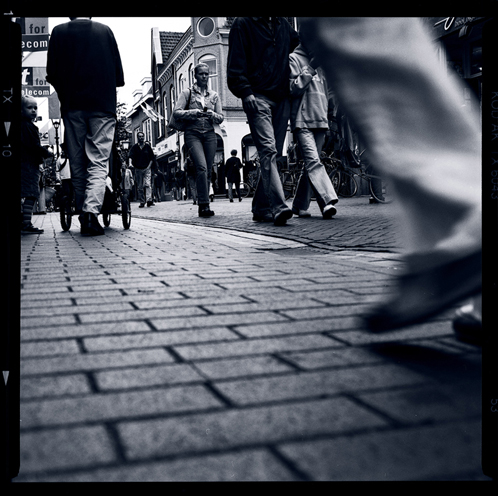
Trees and leaves
(Bronica SQ-B, 80 mm lens on Fuji NPH400 roll film)
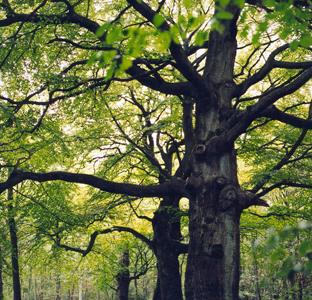
This is one of my very first images shot with my Bronica SQ-B camera and a 80 mm lens on Fuji NPH400 roll film. I bought this camera new in 2002: my first MF camera and I still love it!
Wandering through Utrecht, The Netherlands
(Widelux F7 panorama camera, Neopan 400 developed in Ilfotec DD-X)
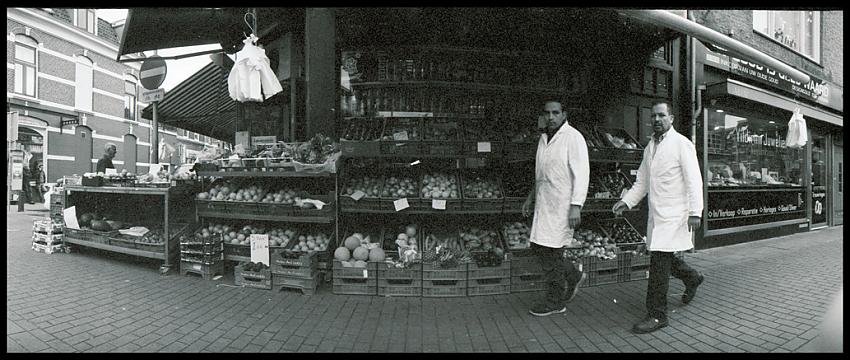
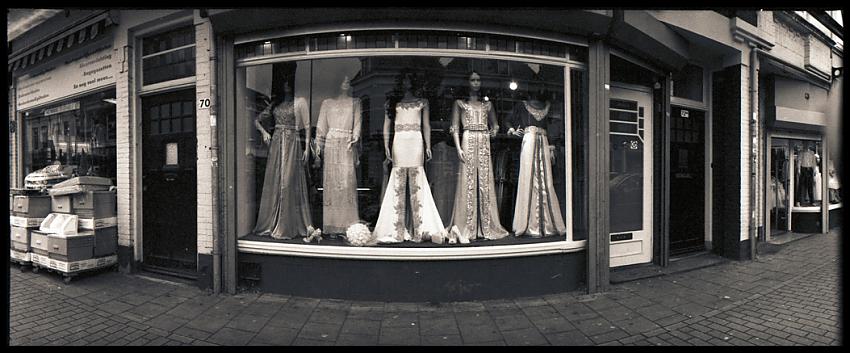
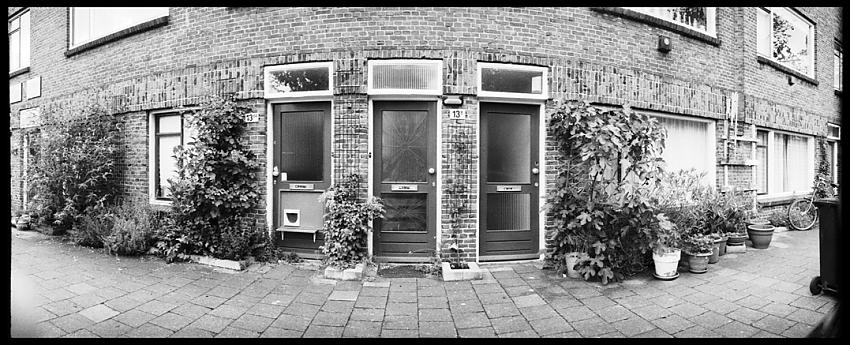
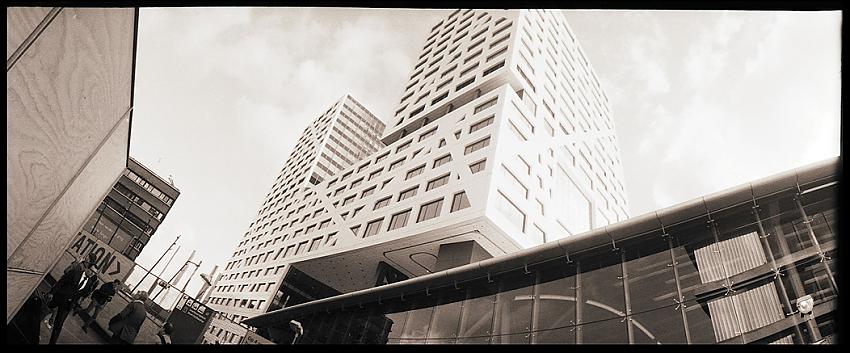
Limburg, The Netherlands
(Mamiya C330f with 80 mm lens, Fuji Provia 100F developed in E6)
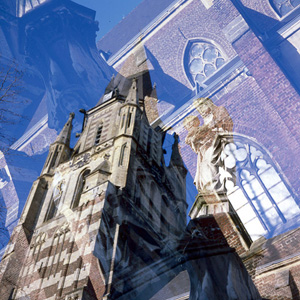
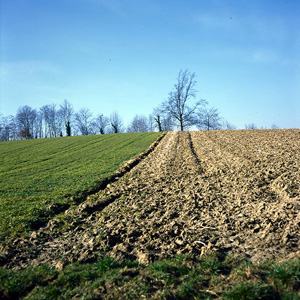
(The photo of the church is an in-camera double exposure)
(Mamiya C330f with 80 mm lens, 1/125 sec f/5.6, Fomapan 100 in Ilfotec DD-X)
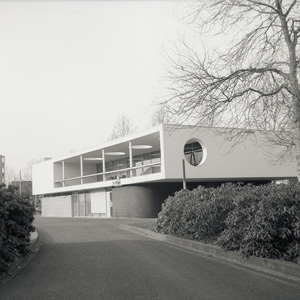
Another shot made on my test run with the Mamiya C330f, 80 mm on Fomapan 100 in DD-X. It's a beautiful modern stone, square building in Sittard, The Netherlands (mid May 2015).
The ceiling of the Sankt Knud Cathedral, Odense, Denmark
(Nikon F4s, Fuji Sensia II 200)
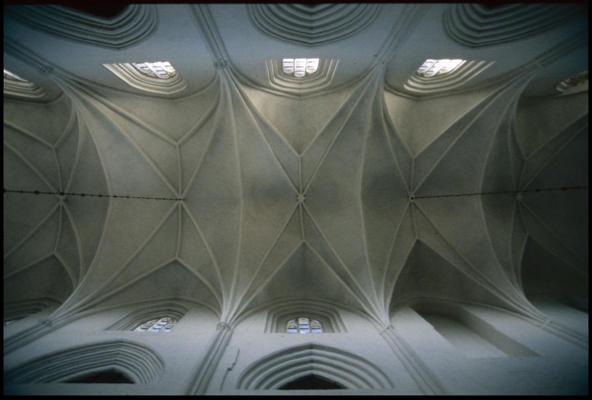
Close-up of some fern leaves
(Nikon F4s with Nikkor 24-85 mm Macro lens @ 85 mm, expired Fuji Sensia II)
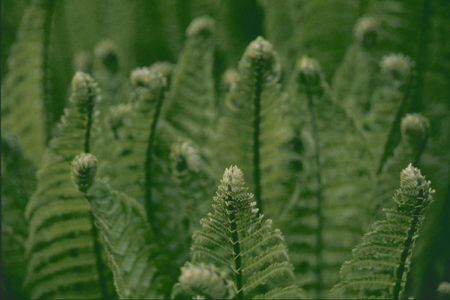
"Have fun and catch that light beam!"
Bert from Holland
my blog: http://thetoadmen.blogspot.nl
Click here to send me an email
"... avoiding the common illusion that creative work depends on equipment alone ..." (Ansel Adams in his book "The Camera")
"... I enjoy vintage cameras as “users,” rather than imprisoning them in some display case"
"... It's the bottom of a staircase that spirals out of sight ..."
"... but I just love the good natured mirth you provided ..." (a complement I enjoyed receiving)
(The lens scematics in my logo is a Carl Zeiss Distagon 21 /2.8 retrofocus lens)
[ All images and texts on this site are under copyright! Please do not copy © 2016-2024 ]